BEaTriX
Beam Expander Testing X-ray Facility
SHORT DESCRIPTION
BEaTriX is a facility installed at the INAF-Brera Astronomical Observatory in its seat Merate (Lecco). It is the first realization of an instrument that generates a parallel and wide X-ray beam within a small lab. The main objective of BEaTriX is to demonstrate that it is possible to perform acceptance tests of the optical modules of the ATHENA telescope, at a rate able to keep up with their manufacturing in series.
ATHENA is an ESA X-ray observatory, scheduled for launch in 2030. The telescope consists of several hundred optical modules (Mirror Modules, MM) in silicon (Silicon Pore Optics, SPO) to be assembled. The MMs, produced with the well-established silicon technology used in the semiconductor industry, will be produced at a rate of 2 MMs/day, each one needing to be tested for acceptance before integration.
MMs are currently being tested at the Berlin synchrotron BESSY II, where the X-ray beam produced by a synchrotron is parallel but very small; hence, it does not allow illuminating the entire modules to be tested. The modules are also measured at PANTER, of the Max-Planck-Institut für Extra-terrestrische Physik, located in Germany near Munich; however, the vacuum chamber is extremely large and requires days to reach the vacuum necessary for the measurement.
Research entities involved in the BEaTriX project: INAF – ESA – ESRF – IMEM – MPE – DTU
ROLE OF THE OBSERVATORY
In 2012, INAF-OABrera began to design a unique structure in the world with the aim to overcome the limitations of existing laboratories, thanks to the initial funding of the AHEAD (Activities for the High-Energy Astrophysics Domain) project, a grant awarded by the European Horizon-2020 program.
Thanks to the results achieved, INAF-OABrera subsequently obtained more funding to build the laboratory at our headquarters in Merate (LC): an ESA contract, a second AHEAD funding, ASI funds, and other dedicated INAF funds.
BEaTriX has been designed to ensure a certain flexibility, beyond its primary purpose for the ATHENA telescope, so as to be used in the future for other X-ray optics, i.e. optics of different sizes than the ATHENA MMs and different focal lengths.
BEaTriX TEAM
OAB Staff
- Gianpiero Tagliaferri – Project Leader – gianpiero.tagliaferri AT inaf.it
- Giovanni Pareschi – Deputy Project Leader – giovanni.pareschi AT inaf.it
- Bianca Salmaso – Program manager & System Engineer – bianca.salmaso AT inaf.it
- Stefano Basso – AIT & AIV Executive Manager – stefano.basso AT inaf.it
- Daniele Spiga – Optical design and simulations – daniele.spiga AT inaf.it
- Mauro Ghigo – Vacuum System, Polishing and figuring and control software – mauro.ghigo AT inaf.it
- Gabriele Vecchi – Mirror polishing and figuring – gabriele.vecchi AT inaf.it
- Giorgia Sironi – Mirror metrology – giorgia.sironi AT inaf.it
- Vincenzo Cotroneo – Mirror figuring – vincenzo.cotroneo AT inaf.it
- Andrea Bianco – Clean environment – andrea.bianco AT inaf.it
- Rachele Millul – Project Controller – rachele.millul AT inaf.it
- Roberto Moncalvi – Contract Officer – roberto.moncalvi AT inaf.it
Students and postdoc in OAB
- Davide Sisana – PhD Politecnico Milano
- Akanshu Chauan – Postdoc
- Simone Marini – MS Thesis Politecnico Milano
Staff from other entities
Claudio Ferrari – Crystal manufacturing and characterization – IMEM-CNR
Andrea Zappettini – Crystal manufacturing – IMEM-CNR
Vadim Burwitz – MM cross-validation – MPE
Manuel Sanchez del Rio – Crystal simulations – ESRF
Michela Uslenghi – Detectors – INAF-IASF-MI
Mauro Fiorini – Electronics – INAF-IASF-MI
Finn Christensen – External advisor – DTU
Desirée Della Monica Ferreira – Mirror coating – DTU
Sonny Massahi – Mirror coating – DTU
TIMELINE
2012 – 2030
WEBSITE
CONTACT
bianca.salmaso AT inaf.it
CREDIT
Web page content: B. Salmaso and D. Spiga for BEaTriX Team
Origin of the name BEaTriX by Daniele Spiga
As often happens with the names of scientific projects, it is an acronym: initials that form a word. And in this way, the word takes on two meanings: one “serious” and one more “transcendent”. Let’s start with the “serious” one: BEaTriX is the acronym for the “Beam Expander testing X-ray facility”, a complex equipment assembly, unique in the world, enabling the creation of a parallel and wide beam of X-rays. This, in turn, simulates an astronomical X-ray source, in order to carry out tests on modular optics for telescopes such as Athena. BEaTriX was born for the development of silicon pore optics, in the context of our collaboration with ESA and Cosine. And it is a facility that is drawing great attention worldwide.
But BEaTriX, with this interlocking of letters, is also dedicated to Beatrice Portinari, the woman who inspired Dante to write the Divine Comedy; the immortal masterpiece that recounts his journey not only through the Cosmos known in his days, and into the depths of the human soul also. And our soul is not only made of rationality, but also of emotions and passions, sometimes destructive but – fortunately – also high and sublime, the same passions that can lift humanity from the hell of self-destruction to the paradise of the contemplation of the entire Universe. And just as Beatrice (“she who makes happy”) leads the Supreme Poet by the hand towards the sky, illuminating him with the reflection of divine light…, so we want to illuminate (even in X-rays) the optics that will carry the Athena telescope to the sky. To reveal to mankind a face of the Universe that we do not know yet, and make them a little happier than now.
“Beatrice mi guardò con li occhi pieni
di faville d’amor così divini,
che, vinta, mia virtute diè le reni,
e quasi mi perdei con li occhi chini.“
(Paradiso, IV 139-142)
